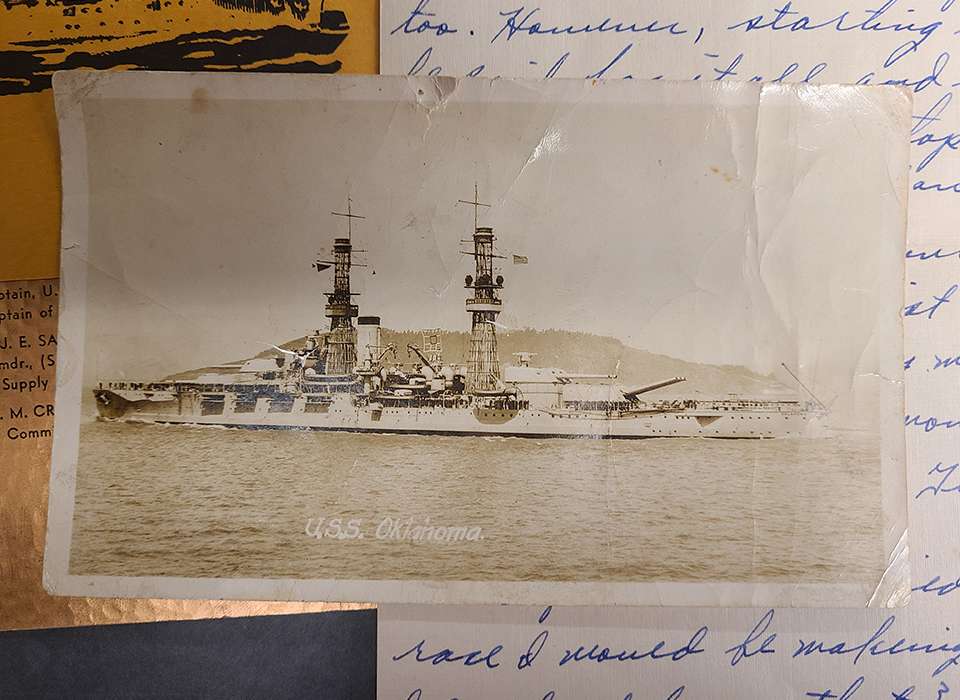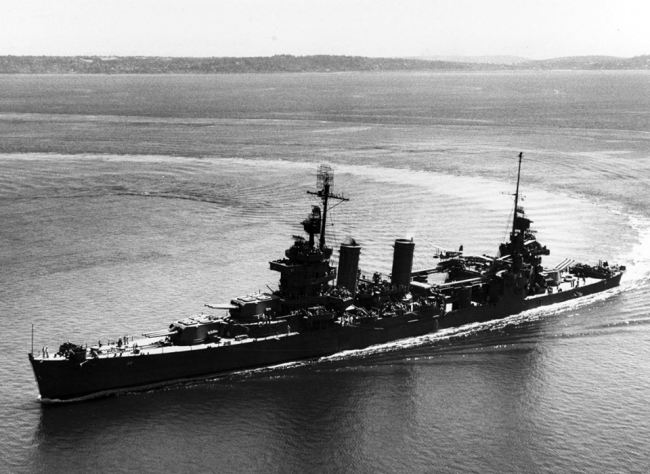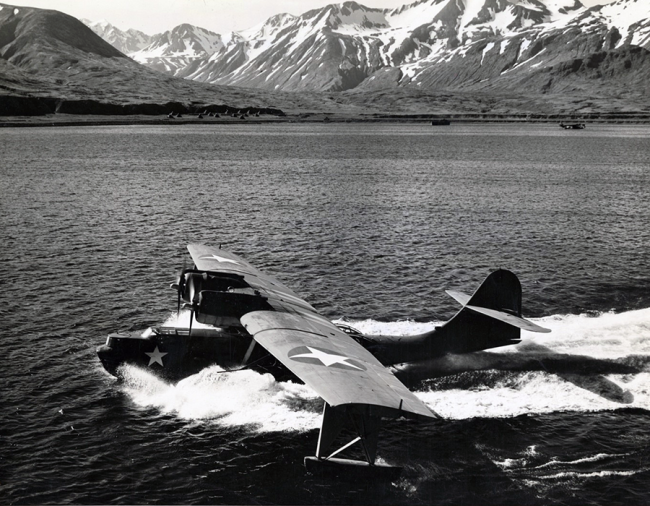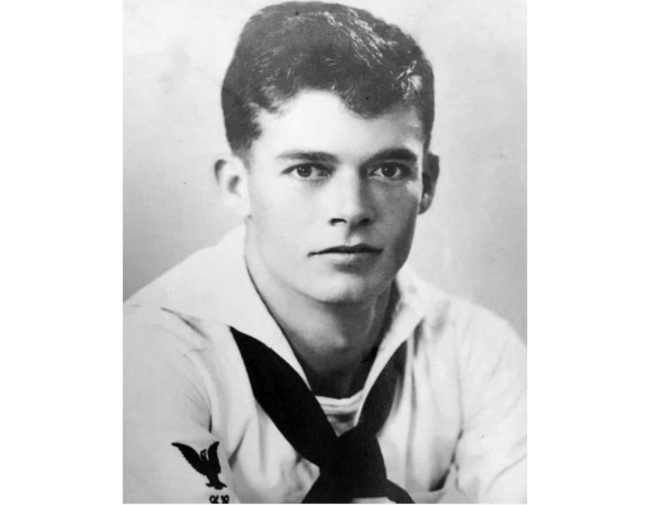For many Americans killed during World War II, the manner of their death was known, witnessed by members of their unit, or uncovered through the documentation produced by repatriation programs after the war.
For approximately 79,000 of the Americans killed during World War II, their files are listed as unknown, unrecoverable, or missing in action. The majority of these casualties were either buried in graves marked as unknown or are considered unrecoverable as is the case with burials at sea. Even those whose remains are recovered and eventually identified, the stories of their final actions have been lost forever. All that can be confirmed is their final disposition.
For the majority of the 429 men entombed in the USS Oklahoma (BB-37) after the Japanese attack on December 7, 1941, their fate had been that of being unidentified. The tragedy of that fate is that thousands witnessed what happened to the ship, but no one will ever know their individual stories. Now over 70 years later, tremendous efforts by the Defense POW/MIA Accounting Agency (DPAA) have sought answers, or at least closure, and many of those previously listed as unknown have joined the ranks of the identified.
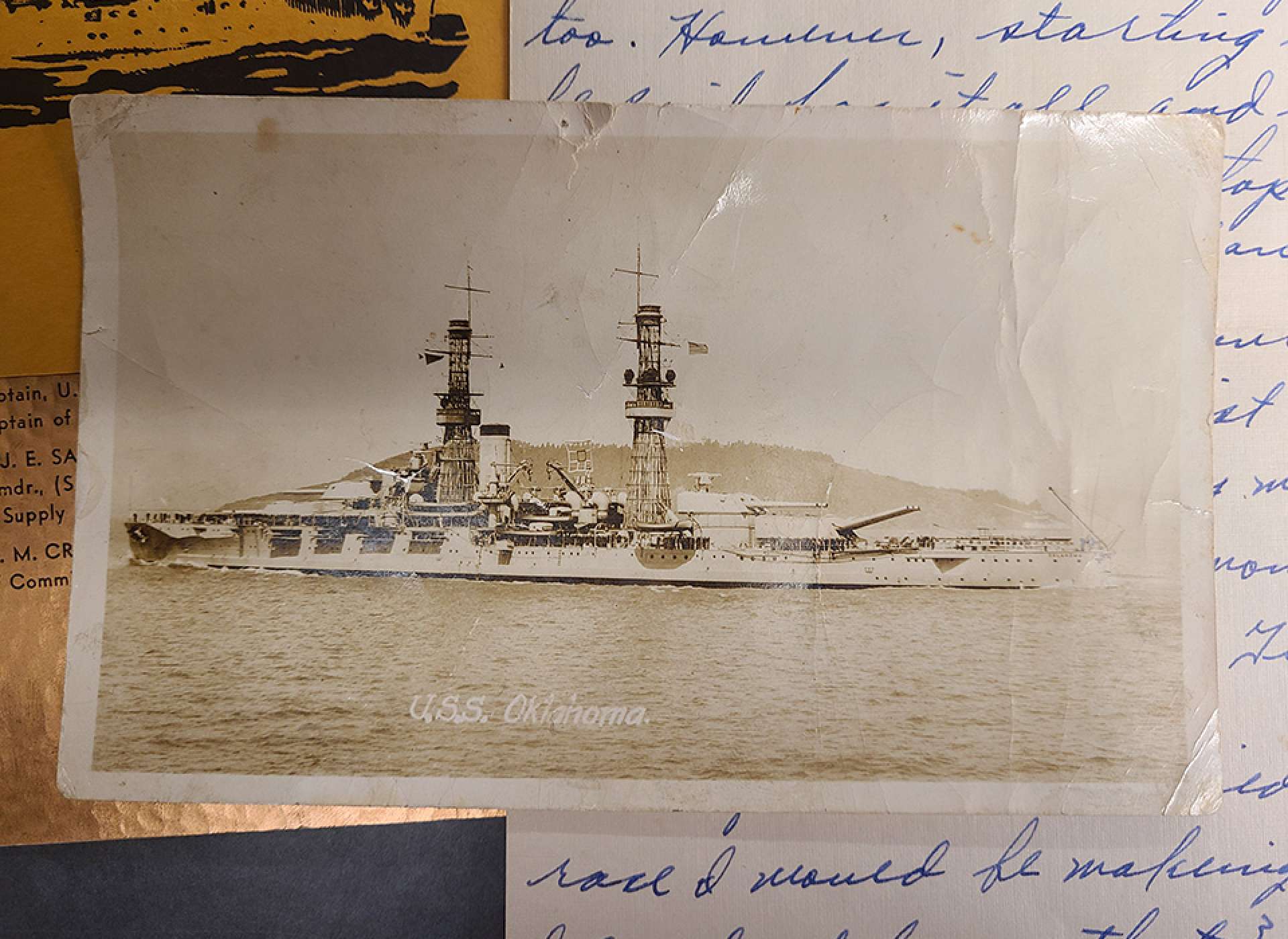
Postcard image of USS Oklahoma (BB-37) from the service of AMM2c Durrell Wade. This image represents the ship before the 1927 modernization during which, among many changes, the cage masts were replaced with tripod masts. Gift in memory of Durell Wade, 2019.123.
On the morning of December 7, 1941, the USS Oklahoma sat among a cluster of giants known as Battleship Row off Ford Island in Pearl Harbor. Anchored at berth F5, Oklahoma rested outboard of the USS Maryland (BB-46), the first set in a row of paired battleships stretching down the eastern tip of Ford Island. The day had started like many Sunday mornings.
Despite the few hours separating morning colors from Saturday night, the majority of the officer and enlisted complement of the battlewagon were onboard ready to do their duty. Those who were not onboard were in their authorized quarters ashore with their wives and families. The difference was that Sundays were traditional days of rest and lighter duty while the ship sat in harbor. For the active units of the Pacific Fleet, more time was spent at sea than in port.
A facility such as Pearl Harbor is much more than just a parking space for warships. A fleet is not part of a harbor, it is based there. Fleets are meant to be at sea, training or projecting power, which was the case for the taskforces of the US Pacific Fleet which spent about 60 percent of their time underway. The remaining time was spent in Pearl Harbor performing maintenance, overhauling equipment, replenishing supplies, or resting the crews. In fact, Oklahoma had only recently returned from maneuvers, mooring on December 5, 1941.
Despite the relative safety of a major naval base, the ships of the fleet were still on a war footing. The fleet commander required a certain number of enlisted men and officers to be on ship at all times. Twenty-five percent of shipboard antiaircraft batteries were to be manned at all times with other batteries ready service magazines stocked and accessible. Once ships returned from operations, they were replenished as soon as possible, topping off food stores and oil, giving them the ability to immediately get underway. In addition to the regular shipboard watches and duties of the sailors, condition Yoke was set, with the majority of watertight doors closed and dogged down.
First word of an attack on USS Oklahoma was shouted at approximately 7:57 a.m. Among the attacking Japanese aircraft were 40 torpedo bombers divided into four groups. Equipped with specially modified torpedoes, two of these groups were directed toward the ships anchored along Battleship Row. As these two separate flights passed over the officer’s boat landing at Merry Point, they descended below 100 feet and released their fish. Dropping against anchored ships at point blank range, their accuracy was devastating. Due to the extent of damage it was never determined exactly how many, but at least five torpedoes struck the Oklahoma. Within 12 minutes the ship was capsized at its berth, a sudden and violent demise, rivaled that day only by the magazine detonation of USS Arizona (BB-39).
By all accounts, the ship was doomed from the moment of the first torpedo hit, just as the crew was beginning to scramble to general quarters. The list to port began immediately, further complicated by two additional torpedo hits within a minute of the first. No amount of counterflooding could help the ship at that point, especially after the next round of torpedoes struck the listing vessel. The surprise was complete.
Commissioned in May of 1916, the 27,000-ton battleship only managed to fire a burst from a small machine gun at the attacking aircraft before the weapon was put out of commission by the first torpedo strike—the only shots fired in anger by the Oklahoma in over 20 years of service. The rest of the antiaircraft batteries were manned and almost ready to fire when massive columns of water and tons of oil kicked up by the torpedo explosions combined with the list to make the weapons unserviceable.
It may have taken approximately 12 minutes for the ship to fully capsize, however, the men aboard knew within minutes that the ship was listing too far, too quickly, for them to stop it. Onlookers and men topside watched the massive ship roll a total of 135 degrees before the superstructure impacted the bottom and stopped the movement. Hundreds dove overboard or climbed up the hull as it turned. Hundreds, still within the hull manning their stations and struggling to close hatches, had their world plunged into darkness, and turned upside down.
Two days after the attack, frantic efforts by local contractors and US Navy personnel had managed to rescue 32 men from the capsized hull. Out of a crew of over 1,200 men, however, 429 had been killed, their remains still in the overturned hull. One of these men was Aviation Machinist’s Mate Second Class Durell Wade. A native of Calhoun City, Mississippi, Wade enlisted in the US Navy on June 2, 1936. Wade had a unique job aboard the Oklahoma as a member of the aviation detachment for Observation Squadron 8 (VO-8).
Each battleship carried float planes used for scouting and spotting the gunfire of the main batteries. As an Aviation Machinist’s Mate, Wade was part of the crew that maintained these aircraft. By the morning of December 7, he had been stationed on the Oklahoma for over four years. It will never be known what happened to him that morning. Likely, he descended into the hull of the ship when general quarters sounded and never came back up.
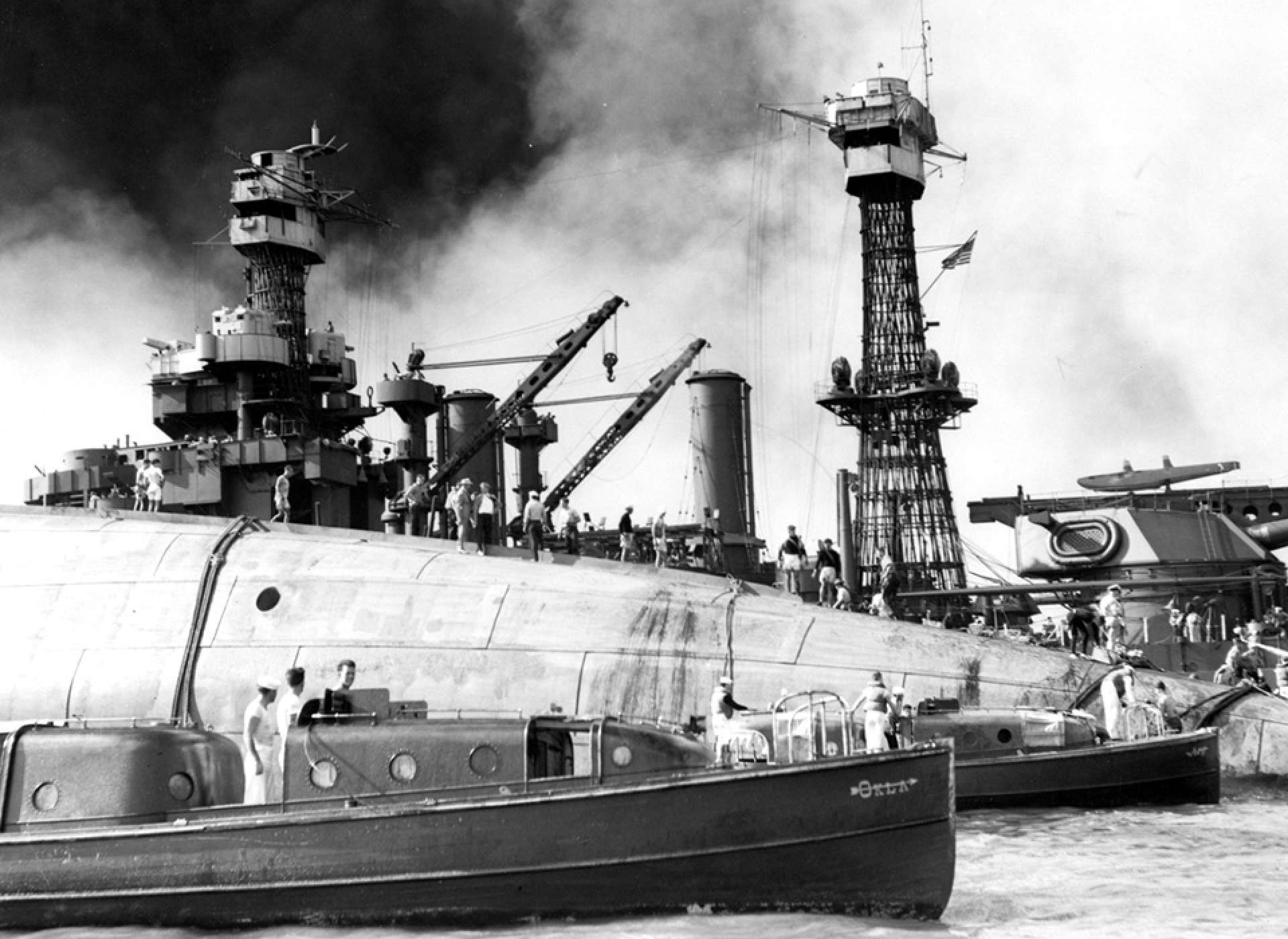
Rescue efforts underway on the overturned hull of USS Oklahoma (BB-37). The officers motor boat in the foreground is one from Oklahoma that managed to survive the attack. Efforts by local contractors and US Navy personnel managed to rescue 32 men from the capsized hull. Image courtesy of the Naval History and Heritage Command.
Within weeks of the attack, salvage operations were underway at Pearl Harbor. Despite the success achieved, hard decisions needed to be made about the most damaged ships, including the USS Oklahoma. After 32 men had been rescued from the overturned hull in the days after the attack, little additional work had been done. When a ship as massive as the Oklahoma turns over in a muddy harbor, all regular access points are buried, leaving only the hull exposed. The position and instability of the hull made salvage of material unlikely, rendering the Oklahoma a complete loss.
In March 1942, the Pearl Harbor Navy Yard advised the Bureau of Ships that salvage at that time was not an option. May 1942 saw authorization for salvage; however, the manpower requirements and needs of a rapidly growing war in the Pacific resulted in a delayed start.
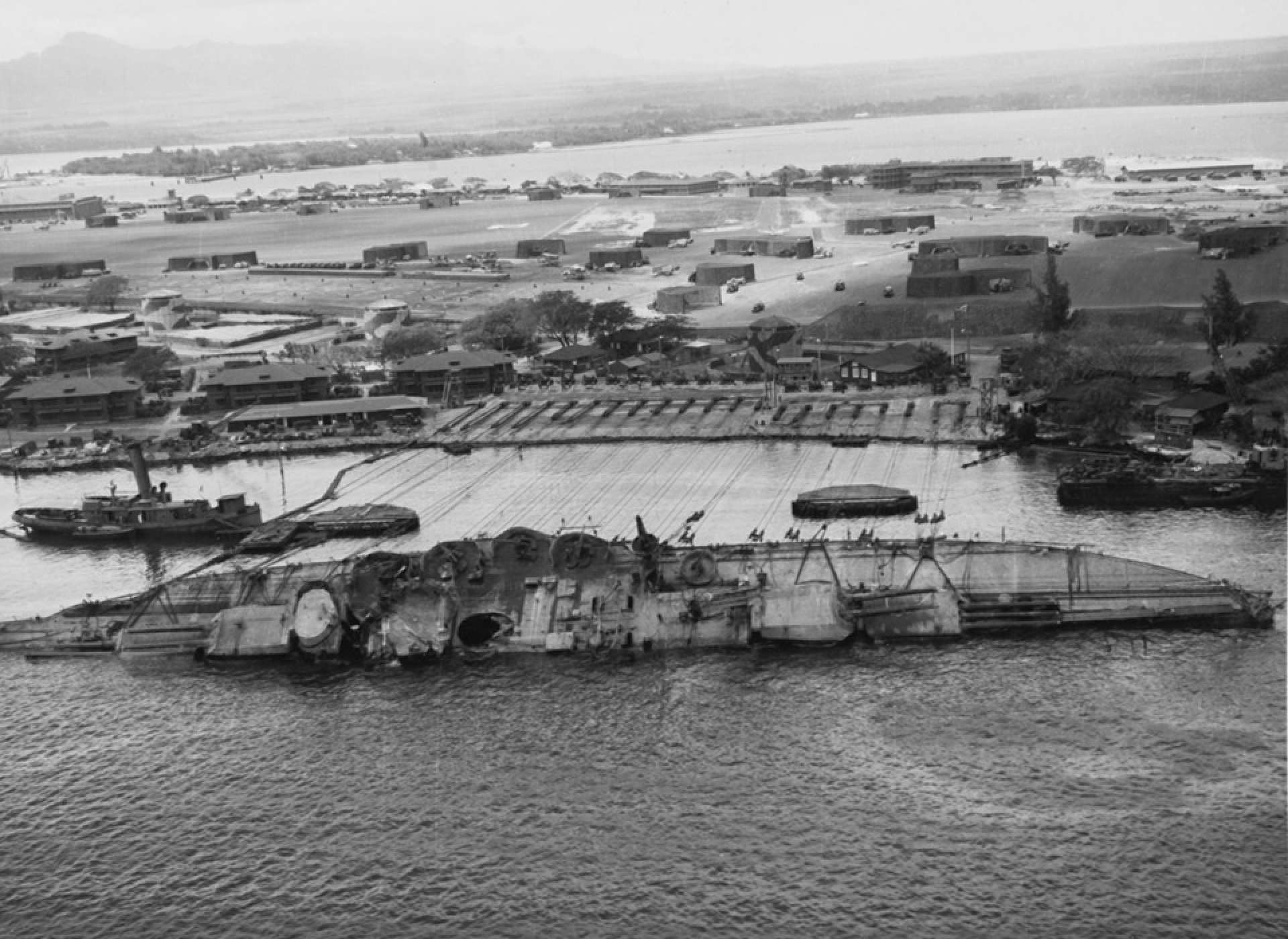
Taken on March 29, 1943 this image shows the USS Oklahoma (BB-37) righted back to about 30 degrees. Over a 6-week period, winches anchored on Ford Island slowly brought the ship back to a vertical position. Four months later the Oklahoma was fully refloated and moved to drydock. Image courtesy of the Naval History and Heritage Command.
For the remains of 429 men, including Durell Wade, the next part of their journey did not begin until March 1943. After studies and months of preparation, righting operations began on March 8, 1943, when 21 synchronized winches anchored on Ford Island began pulling on the overturned hull. By June 16, 1943, the hull was considered upright and floating operations began. Previous salvage operations had shown three challenges that needed to be addressed when refloating a ship—detection and removal of toxic gasses, removal of massive quantities of fuel oil, and recovery of human remains.
Once the Oklahoma was righted, divers plugged as many holes as possible and descended into the ship to close as many hatches as feasible. Large pumps were then placed on board to remove stagnant water and oil. During the dewatering process special care was taken to remove human remains without the salvage crews present. Compartments were pumped down until they had two to three feet of water, then special crews went in to recover the remains. Given the condition of the ship, salvage efforts, and the time that elapsed since the attack, remains continued to be discovered after the ship was refloated, with the last sets being found in June 1944.
Once freed from the waters of Pearl Harbor, the USS Oklahoma was decommissioned, declared a derelict, and destined for the scrapyard. In 1947, the tugboats Hercules and Monarch left Pearl Harbor for the west coast of the United States with the Oklahoma in tow. During a severe storm the searchlight from Hercules revealed the Oklahoma was listing. Soon both tugboats were being pulled backwards as the once mighty ship started slipping beneath the waves, its name and story well known as she sank to an unknown location 500 miles east of Hawaii.
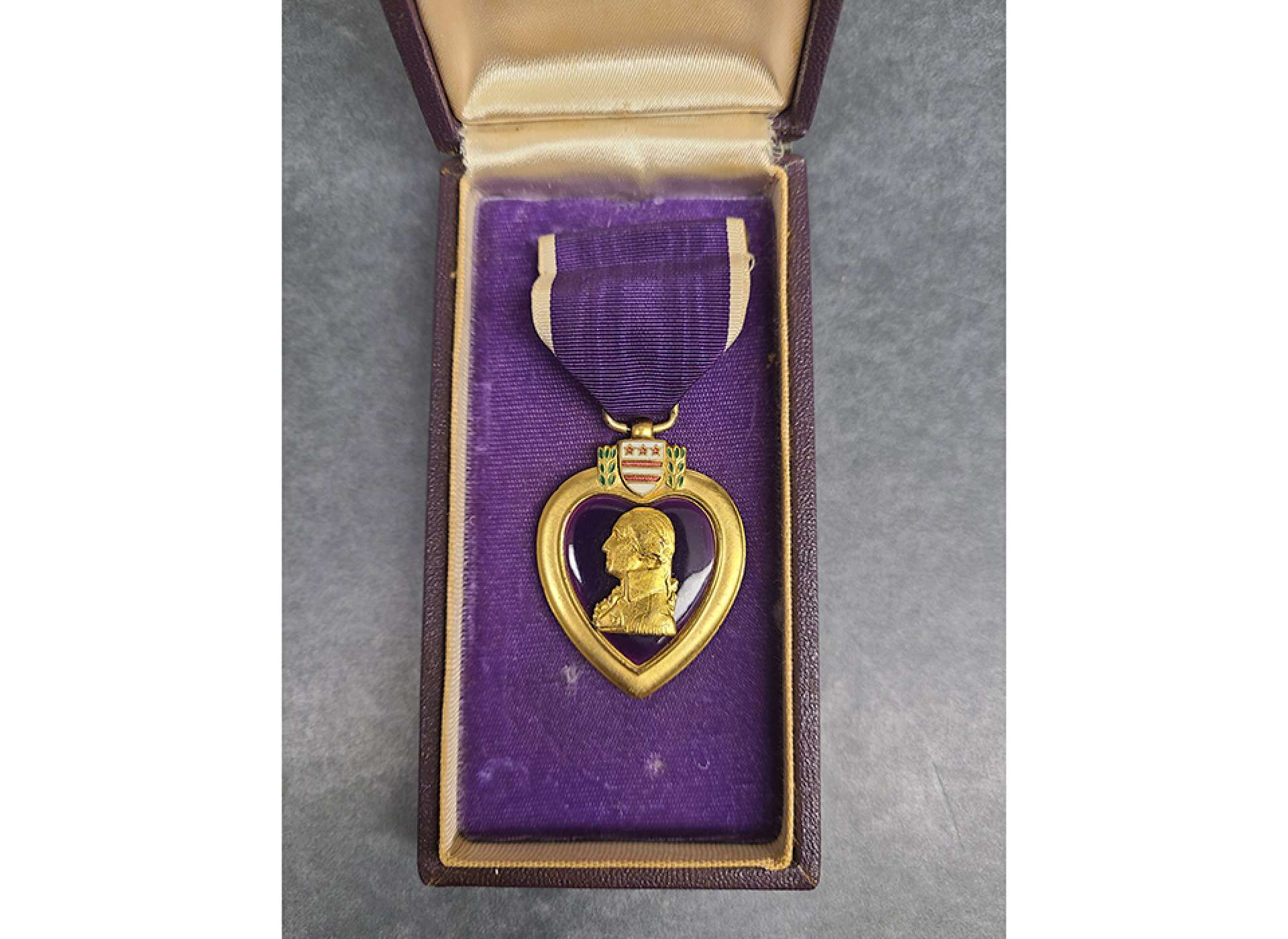
Purple heart of AMM2c Durell Wade. Wade was killed on USS Oklahoma (BB-37) during the Japanese attack on December 7, 1941. His remains were recovered after the ship was righted and refloated in 1943. He was buried in an unknown grave until 2018 when the Defense POW/MIA accounting agency positively identified him. Gift in memory of Durell Wade, 2019.123.
Meanwhile, the remains of over 400 men recovered from the USS Oklahoma were buried in 52 graves marked as unknowns. After the war, an attempt to identify the unknowns resulted in the positive identification of only 35 men. The rest were reburied in 46 graves to await more advanced technology that might one day be able to identify them. That day came in 2015.
After years of planning, an announcement was made by DPAA that all Oklahoma remains would be exhumed and DNA tested for identification. This operations was known as the Oklahoma Project. As of September 2021, out of the remaining 394, 346 sailors and marines already have been identified and buried under their names. This has been a remarkable achievement. One of those men was Aviation Machinist’s Mate Second Class Durrell Wade. Identified in 2018, Wade was returned to his native Mississippi to finally rest under a headstone that reads Durell Wade, AMM2.
USS Oklahoma Identification of Remains by the DPAA
Joshua Schick
Cite this article:
MLA Citation:
APA Citation:
Chicago Style Citation:
